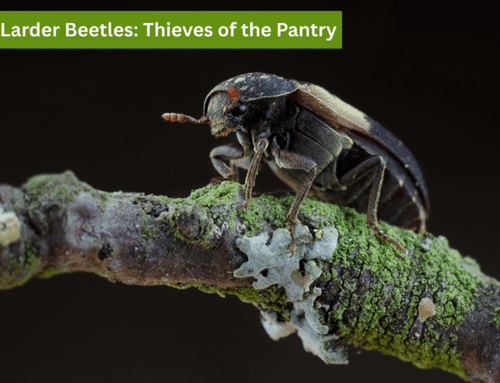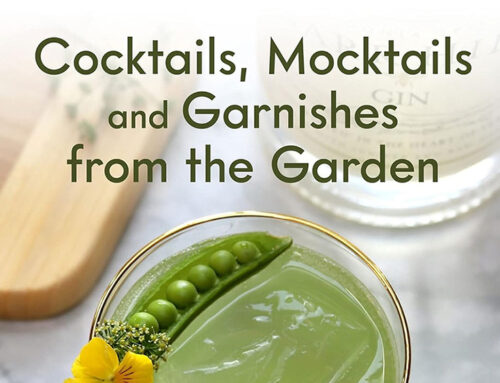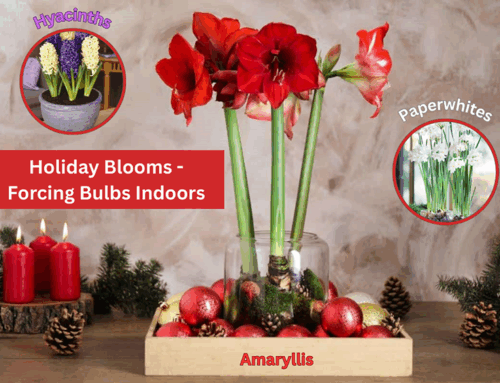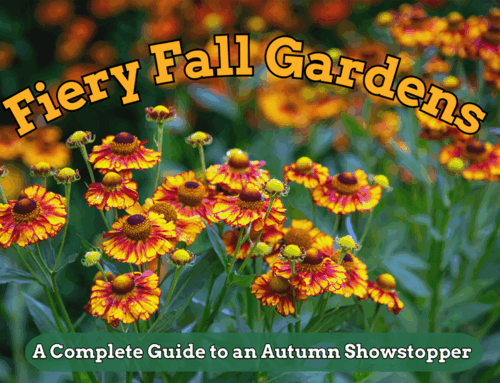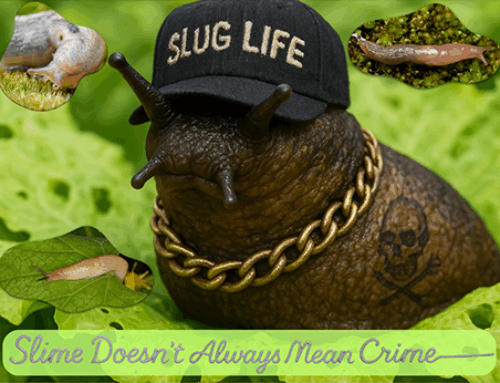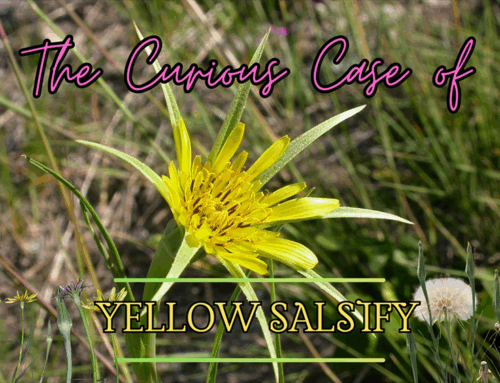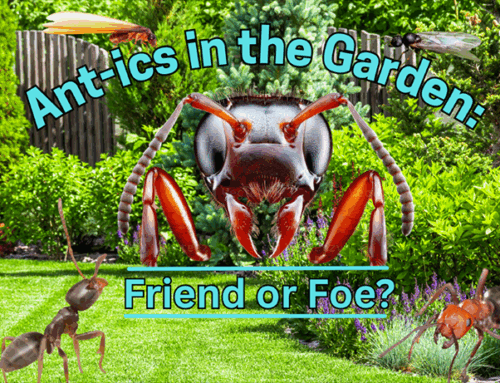Introduction to the Arum Family
by Lyndon Penner
Lyndon kindly gave us permission to post the notes from his fascinating talk at the October 2015 meeting.
As someone who has always had a fascination for strange & unusual plants, as well as plants that are toxic or poisonous, it seems only natural that my inclinations would eventually lead me to the Arum family, Araceae. Of all the flowering plants, these might be the strangest. Many have exotic and beautiful flowers. Many have bold, dramatic foliage. Still others produce extravagant displays of berries. A goodly number of them are strongly scented, not always pleasantly.
Plants in the Arum family are often referred to as aroids, and there are well over 3700 species contained in 107 genera. They exist in both hemispheres in a variety of growing environments. A few of them are even aquatic. The vast majority of them are either tuberous or rhizomatous, and nearly all of them contain calcium oxalate to at least some degree. (This means that most of them can be considered poisonous.) They run the gamut from mildly toxic to extremely deadly. Curiously, most of the aroids are thermogenic; that is, they have the capacity to produce heat. In some species, the blossoms can heat themselves to nearly 45 degrees Celsius, which is often 10 to 15 degrees higher than the surrounding air! This serves a number of purposes. For some, like the skunk cabbages, it gives them the ability to extend their own growing season and flower well before there is any competition for pollinators. In many cases, heat facilitates pollination. Many are pollinated by flies, and most produce a foul scent to attract them. Heating the blossom actually allows the scent to be carried much further, thereby ensuring better pollination.
It is pollination itself that leads us to the most important defining trait of these plants, and that is their blossoms. In every species, the blossom consists of a spathe and a spadix. The spathe is a bract or a hood-like organ that usually encloses or clasps the spadix, which is a long, phallus-like object covered in extremely minute blossoms. In some species, they are dioecious but in most, female flowers are at the bottom with male flowers at the top. The stigma is not receptive while pollen is being released, thereby preventing self pollination. The largest collection of aroids in the world is housed in the Missouri Botanical Garden in St. Louis. The Munich Botanical Garden is the second largest collection, and certainly the largest collection in Europe. Some of these plants do well for prairie gardeners and some of them do not. Some make excellent garden plants, some are great as cut flowers, some provide dramatic and bold foliage. Many are excellent houseplants. All are interesting. I hope that you will find these plants as mysterious and alluring as I do.
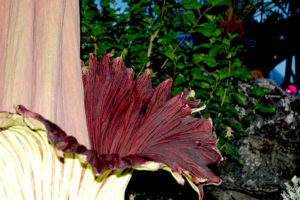
Amorphophallus titanum at the Muttart Conservatory. Photo by Jane Starr.
Amorphophallus– Upon seeing an Amorphophallus flower for the first time, the most common response of people is “Uggh!! That’s awful!!!” These are dramatic and fascinating plants whose Latin name, when translated literally means “misshapen penis”. These are not for the faint of heart! There are over 170 species and they range from west Africa all the way to the islands of the Pacific. They inhabit a wide variety of habitats from disturbed ground, limestone outcrops, dense forest, and mountain sides. They are generally herbaceous perennials accustomed to a wet/dry period, usually flowering at the onset of the wet period. These plants range from small to massive, and they are highly variable from one species to another. The flower appears first and lasts only a very short time. This is followed by one (rarely two), green to purple tinted leaves that last only a season. A small break is enjoyed between the time the flower fades and the time the leaf appears. It can be as short as a month or as long as a year. The flowers usually emit a powerful, nasty stench and nearly every species is pollinated by either blowflies or sweat bees. They can be propagated from seed (difficult!) or from division. (Less difficult, but still challenging.) In cultivation, they are prone to rot if they are even a little bit overwatered, particularly during their rest period. Attempts to grow these should not be made unless you are some sort of plant fanatic who likes things that reek horribly, even if for only a short time.
Amorphophallus bulbifer– One of the more common amongst these plants, this species hails from India, Bangladesh, Bhutan, Nepal, and Myanmar. It grows about 3 ft. tall and produces gorgeously mottled stems crowned with a single, hand-shaped leaf. The large flower appears in June and is flesh pink in color. The spathe almost resembles a seashell or a ceramic carving, and sometimes it is speckled in black. It smells like the worst flatulence you’ve ever had and is understandably pollinated by flies. It is quite unreal looking, and they take a significant rest between flowering and producing a leaf.
Amorphophallus dunnii– From China and Thailand, this is an excellent choice for a beginner. It grows about 2 ft. tall and produces an enormous, pale green spathe with a dark center and a white spadix. It smells curiously of fresh carrots. The foliage is handsome and it multiplies fairly quickly from offsets.
Amorphophallus henryii– From Taiwan, this is another fairly small species with attractive leaves and stems that are pleasantly mottled. The flower is very large, and a dark violet in color, usually ruffled. From this rises an enormous 12” spadix that looks like a slightly limp carrot. It smells of old socks, but thankfully it is not powerfully scented. If the flowers are pollinated, very handsome clusters of brilliant blue berries develop. This one too, multiplies very quickly from offsets.
Amorphophallus konjac (Amorphophallus rivieri)- One of the best known species, this one comes to us from southern China, Vietnam, and the southernmost part of Japan. Very peculiar, this plant sends up an enormous, green and purple mottled stalk that supports a single very large leaf. When the tuber is mature enough, it will flower. This sometimes takes many years. The plant stands 2-3 ft. tall when in flower and the blooms appear in spring. The spathe is a very dark, lurid purple and has the look and texture of the purple vinyl used for car seats in the seventies. The enormous spadix protrudes and is a sort of electric fuchsia color. The plant usually rests for about 90 days between flowering and producing its leaf. This is an exceedingly strange plant that will absolutely get a reaction from people when they see it! This is considered one of the lesser scented species, but it is still quite stinky and reminiscent of overcooked cabbage.
Amorphophallus titanum– Although the giant Rafflesia holds the record for the largest blossom in the world, it is this plant that has the largest inflorescence in the world. This is easily one of the strangest, most bizarre things in existence and one of the largest herbaceous perennials on earth. It can stand 13 ft. tall when in flower and the tuber from which it grows can weigh over 200 lbs. Discovered just over 100 years ago in Sumatra, it is not terribly common in the wild but can sometimes be found on forested hillsides at high altitudes. It is occasionally kept in botanic gardens and there are about two dozen of them “in captivity” throughout the world, with tubers costing several thousand dollars to purchase.
The titan arum, as it is known in popular culture, is often remarked upon for its size, strangeness, and smell. What is almost never spoken of is how beautiful it is. Pictures do not do justice to how gorgeous it is in real life. The color of the spathe is usually reddish but this is variable and it can range into nearly purple. Very large clusters of scarlet berries follow the flower if pollination occurs. When in bloom, the plant smells powerfully of rotting flesh, and flies and sweat bees flock to it. The fragrance has also led to the other common name of corpse flower. The flower lasts only a few days, and only one blossom is produced every few years. The scent is strongest in the first 24 hours that the bloom is open. It is a difficult plant to cultivate not only because of its size, but because these plants want it hot! High humidity and temperatures above 30 degrees are necessary for any degree of success. When these have flowered in botanical gardens, it has occasionally made front page news. Undoubtedly one of the weirdest plants you will ever see! Edmonton’s Muttart Conservatory is one of only two places in Canada where you can see this plant in flower. (The other is in a conservatory in Niagara-on-the-Lake, Ontario.)

Photo by Jane Starr
Anthurium– Better known as flamingo flowers, these are some of the showiest plants in the aroid family. There are over 900 species and many hybrids, all hailing from tropical places in central and South America. They produce lance shaped, very glossy leaves and leathery, generally very brightly colored spathes around a prominent spadix. They often grow as epiphytes in the wild but adapt readily to being grown in pots. They are commonly sold as houseplants. Bright, humid conditions with moist, humusy soil is all you need to make a flamingo flower very happy. They will live a long time when conditions suit them, and flower for months. The shield-shaped spathes are usually bright red in color, but they can also be white, pink, purple or green. Many hybrid flamingo flowers are of great importance to the floral industry. Hawaii, Costa Rica, and the Philippines produce these flowers in the millions every year.

Photo by Jane Starr
Arisaema– Sometimes known as cobra lilies or jack in the pulpits, these are among the few aroids that stand a good chance of being hardy in your garden. (Depending on the species.) Also known as arum lilies and lords & ladies, these plants are usually more interesting than they are showy. There are approximately 150 species, native to northern Europe, cold parts of Asia, and North America. They favor rich, humusy soil and a preferably humid atmosphere. Not all are hardy, and as they can be very expensive this sometimes prohibits experimentation. Some of them are very difficult to grow, and many books and magazines promote them as being “for the experienced gardener”. Generally, they are handsome foliage plants and many have attractively mottled stems as well. The spathe is often brightly colored or patterned and can be very beautiful. In many cases, the flowers are also fragrant.
Arisaema triphyllum comes from the woods of eastern North America and is probably the best known species. Commonly called jack in the pulpit, it is extremely hardy and has done well in many prairie gardens. Two large, trifoliate leaves are produced along with a single blossom. Over time, it will slowly colonize. The flowers are pale green with lighter stripes, but occasionally they may also be marked in purple or bronze. If they are pollinated, showy bright red berries will appear in late summer. Arisaema seed is difficult to germinate and from seed to bloom takes about four to six years. (Division is a much more reliable way of obtaining new plants.)
Like A. triphyllum, Arisaema amurense is perfectly hardy but usually listed as being a zone 4 or 5 plant. It produces a white spathe with dark purple stripes and grows about 18” tall. It is handsome and very vigorous and multiplies freely where it is happy. Seldom offered, it is a great shade perennial that looks good with ferns. Native to the woods of northern China and Siberia.
Arisaema candidissimum is one of the most sought after species and hardy to at least zone 3. It produces gorgeous soft pink spathes with white stripes and a few green markings. It is also pleasantly scented. Late to break dormancy but well worth having, there is also a variety with solid white spathes. In the right location, this is a plant that will be noticed and commented on!
Arisaema sikkokianum is a highly coveted and highly in demand species from Japan. It is often confused with a similar Chinese species (Arisaema speciosum) but it is much hardier and easier to grow. A true “collector’s plant”, A. sikkokianum produces a deep purple-brown spathe prominently striped in white. The foliage is handsome and sprinkled with silver splashes. A slow grower that multiplies by means of tubers, this is an expensive plant and not often available for sale. It is however, very long-lived and gets better every year. It is hardy enough to be worth trying here.
Two other reasonably hardy species you may encounter include A. dracontium and A. erubescens. The first is commonly known as green dragon and can reach the dramatic height of 4 ft. It produces a single, deeply lobed leaf and a hooded, dark green flower with a curiously long, ascending green spadix. (The blossom is very dragon like and you will see where the common name came from!) A. erubescens is from Nepal and produces a single, enormous leaf up to 15” in diameter! (It rather resembles a propeller.) The stem is spotted in reddish-brown and the blossoms are quite small, but they are beautiful. They are reddish to pinkish brown (sometimes even violet) with white stripes. Both are worth having.
Think of these primarily as foliage plants, but do enjoy the blossoms when they appear. In many species, the bloom appears before the foliage and if you’re not watching, you could miss it!
Arisarum– This is a charming little genus of three species from the Mediterranean and Atlantic islands. All three produce extremely handsome, glossy, arrow shaped leaves on low plants that rarely exceed 8-10”. Humusy, moist soil in partial shade suits them best. They can be propagated from seed with great difficulty, or they can be divided once well established. They are accustomed to some chill in the winter, but are only hardy to about zone 6 or 7. The mouse plant (Arisarum proboscideum) is sometimes cultivated as a curiosity. It is native to Italy and Spain and produces a significant number of small, chocolate-colored spathes with a very curious and prominently protruding “tail”. These are very mouse-like! They appear over a long season in late spring. It is easy to grow in a container. The friar’s cloak (Arisarum vulgare) produces very handsome, deep green triangular leaves attractively splashed in silver. The flowers are dark purple spathes streaked in silver and appear in late winter. It generally goes dormant after blooming but it does quite well in a pot.
Dracunculus– Meaning “little dragon” in Latin, Dracunculus vulgaris is the only species to be commonly cultivated and is it surprising how widely grown it is in Britain. From the Mediterranean, it is surprisingly hardy and is in all ways a fabulous plant. Growing 2-5 ft. tall, it produces exceedingly handsome foliage shortly after the flowers appear. The flowers appear anytime from May to July, and it puts on quite a good show. The huge spathes are a creepy, lurid purple with a very prominent, protruding spadix of a similar coloring. The flowers smell very strongly of rotten meat and are pollinated by flies. Each individual blossom lasts only 2-5 days, and the smell is the strongest for the first 24 hours. The plant rapidly declines after flowering but then you have the foliage to enjoy. So dramatic and strange is this plant that one British catalogue stated that “if it had limbs instead of leaves you wouldn’t stand around admiring it. You would immediately call pest control.”
Lysichiton– There are two species in this genus and they are commonly known as skunk cabbage or western skunk cabbage. (The eastern skunk cabbage looks quite different and belongs in a different genus, Symplocarpum). While the flowers are somewhat unpleasantly scented, the leaves actually smell worse when they are bruised or crushed! Skunk cabbages are also not anywhere near as badly scented as some of their relatives. Both species are large, herbaceous perennials that require damp to wet conditions. They are perfect for bog gardens, pool sides, and places where drainage is an issue. They can be propagated from fresh seed or they can be divided, but this is a difficult and very messy job! After being planted, skunk cabbage will often refuse to do anything for several years. From that point, it settles in and will live quite happily for about 60 years.
Lysichiton americanum is from the western half of North America and hardy to about zone 4. It requires a lot of room and grows 4-5 ft. tall and 3-4 ft. wide. The enormous, paddle-shaped green leaves are very dramatic and stylish. The flower can be up to 16” long and consists of a white spadix with a brilliant lemon yellow spathe. These are among the most thermogenic of all aroids and they actually melt puddles around themselves when they rise out of snowy ground in the spring. The scent of the blooms is peculiar, but not overpowering and not exactly unpleasant. They are very early to flower and very pretty. Flowers appear first, and foliage comes afterwards.
Lysichiton camtschatcensis is about equally hardy to its American cousin and native to parts of Siberia. It is very similar but the flowers are a bit smaller, pure white in color, and less fragrant. It also blooms slightly later. Both are sometimes offered by garden centers and while I do not know anyone who has succeeded with growing them on the Canadian prairies, they might be worth experimenting with in the right microclimate.
Zantedeschia– I think this is the most beautiful and most exquisite genus in the family. Named for the Italian botanist Giovanni Zantedeschi, these flowers tend to polarize gardeners; they either love them or hate them! This is what we commonly know as the calla or calla lily and some people hate them on the grounds that they associate them with funerals. Callas are indeed exquisite cut flowers, and they come in many colors. There are six species, and all are native to South Africa and surrounding nations. There are also many hybrids, with more on the way every year. They generally have heart or spade-shaped leaves, often with silver flecks or translucent spots. They are reasonably hardy, able to tolerate low degrees of frost, and a few of them do well as bog plants. All want moist, humusy soil and a bit of protection from the hot afternoon sun.
Zantedeschia aethiopica grows 2-3 ft. tall and is now widely naturalized in many warm parts of the world. It is evergreen or semi evergreen and grows from stout rhizomes that can make it aggressive. The flowers are very large, pure white, and appear to be carved from marble. ‘Crowborough’ is an especially fine strain of it and ‘Green Goddess’ produces curious, jade colored flowers that are so beautiful as to be surreal. In photos, it always looks somewhat dingy but in real life it is a treasure!
Zantedeschia albomaculata has white spotted leaves and grows about the same size as the aforementioned species. The flowers are smaller, and although they are usually white or cream, they can also be yellow or pink.
Zantedeschia elliottiana is very small, growing only 12-18”. It has been cultivated for so long that it is no longer found in the wild and it is possible that it is of hybrid origin. The flowers are a bright, sunny yellow and it is a very good bloomer.
Zantedeschia pentlandii is only slightly larger, and has attractive, unspotted leaves. The flowers are enormous, golden-yellow and marked with purple at the base.
Zantedeschia rehmannii has elegant flowers on long stems. The flowers may be white, pink, or purplish-red and they are large for the size of the plant. The problem with this species is that the flowers are usually obscured by the foliage. It has, however, been very important as a plant for breeders as it produces such a variety of shades. ‘Superba’ is an excellent pink flowered strain of it, with blooms just raised above the lush leaves.
Finally, there is Zantedeschia jucunda, which is quite rare in the wild. It has green, speckled leaves and enormous, trumpet-like blossoms in a stunning shade of gold. Although showy and easy to grow, it is rarely cultivated.
From these six species, a great multitude of hybrids have appeared over the years. They are easy to grow in your garden if kept in moist, humusy soil out of the wind and protected from the hot afternoon sun. They should be fed regularly, and they will multiply. I like to grow callas in a pot rather than in the ground – they are more easily wintered in a cool, frost-free place. Callas can be induced to go dormant but they are much better spending the winter in a conservatory or a greenhouse. Some of my very favorite forms include the following:
‘Flame’- Orangey-red flowers heavily shaded with yellow.
‘Hercules’- White flowers on enormous, vigorous plants.
‘Kiwi Blush’- Small but abundant white flowers that open white and blush to pink.
‘Mango’-Similar to ‘Flame’ but larger flowers. This one is also more orange-gold then orange-scarlet. The yellow shading is more pronounced when temperatures are high.
‘Red Sox’- Intense pinkish red.
‘Captain Chelsea’- Lavender shaded white. Different!
‘Naomi Campbell’- Very dark red, almost black flowers with reddish stems. Fabulous!
‘Crystal’- Light pink, small flowers, profuse bloomer.
‘Picasso’- Cream to ivory shaded in very dark purple to mauve.
‘Rose Gem’- Brilliant pink.
‘Selina’- A red/gold bicolor with extra long stems making it good for cutting.
Sources:
Admittedly, it can sometimes be hard to source plants in the Arum family for a variety of reasons. They are often obscure and expensive, and not for the impatient! Some of my best recommendations for places that sell plants in this family would be the following:
Fraser’s Thimble Farms– Based on Salt Spring Island, this is a wonderful mail order nursery that offers a fantastic selection of plants that are often not available elsewhere. Their plants are usually tiny when you get them, but they grow!
www.thimblefarms.com
175 Arbutus Rd, Salt Spring Island, BC V8K 1A3
(250) 537-5788
Rundlewood Gardens– A nursery in southwest Calgary that offers a marvelous selection of unusual and fascinating perennials. This is where I bought Arisaema amurense, and it is the most robust and vigorous species I have grown.
www.rundlewoodgardens.ab.ca
1643 Altadore Ave SW. Calgary AB T2T 2P8.
(403) 243-9982
Phoenix Perennials– Phoenix Perennials and Specialty Plants is a particularly marvelous nursery in Richmond, BC that has just about every plant you could ever hope to acquire, and yes, they do send things via mail order. Their address is 3380 No. 6 Road, Richmond, BC, V6V 1P5. Phone 604 270 4133 or www.phoenixperennials.com
Chiltern Seeds– The largest seedhouse in the world, Chiltern is based in England (so placing an order is pricey) but nearly all of my Amorphophallus came from here. www.chilternseeds.co.uk By the way, the catalogue has no pictures and everything is listed by Latin name, but it is one of the most lively and engaging catalogues I have ever read!
Vesey’s– Based in Prince Edward Island, this is a well-respected Canadian company that I have ordered from for years. My mouse plant (Arisarum) came from here. www.veseys.com
Southlands Garden Centre– Owned and operated by highly respected Canadian garden writer Thomas Hobbs, this is a garden center located in Vancouver that is well worth a visit. Excellent source for Arisaemas and a wide variety of other treasures. www.southlandsnursery.com
About the author
 Lyndon Penner grew up on a farm in Saskatchewan and has loved gardening since a very young age. At 16, he began writing for the magazine The Gardener for the Prairies and at 20, he became the youngest person to ever teach horticulture at the University of Saskatchewan. Lyndon has made gardening his entire career and he now writes, teaches, and presents for a wide variety of audiences, including Olds College, the University of British Columbia, and the Calgary Zoo Botanic Garden. He can regularly be heard talking about gardening on CBC Radio and he also does botanical interpretive work in Waterton Lakes National Park. His first book, The Prairie Short Season Yard was published in 2014 and the second, Garden Design For the Short Season Yard : Everything You Need To Know For the Chinook and Canadian Prairie Zones, was released in March of 2015. Lyndon makes his home in Calgary, but spends as much time in Saskatchewan with his nephews as possible.
Lyndon Penner grew up on a farm in Saskatchewan and has loved gardening since a very young age. At 16, he began writing for the magazine The Gardener for the Prairies and at 20, he became the youngest person to ever teach horticulture at the University of Saskatchewan. Lyndon has made gardening his entire career and he now writes, teaches, and presents for a wide variety of audiences, including Olds College, the University of British Columbia, and the Calgary Zoo Botanic Garden. He can regularly be heard talking about gardening on CBC Radio and he also does botanical interpretive work in Waterton Lakes National Park. His first book, The Prairie Short Season Yard was published in 2014 and the second, Garden Design For the Short Season Yard : Everything You Need To Know For the Chinook and Canadian Prairie Zones, was released in March of 2015. Lyndon makes his home in Calgary, but spends as much time in Saskatchewan with his nephews as possible.


